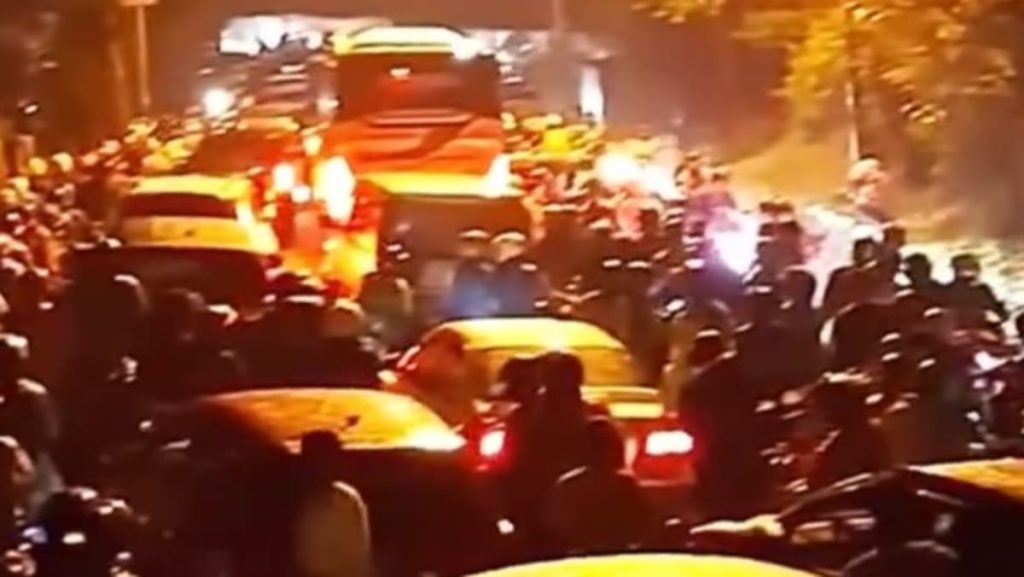Over the long weekend in Indonesia in September, holiday-goers in the mountainous region of Puncak in West Java province were faced with what locals described as the worst traffic congestion they had ever experienced. The gridlock occurred over the holiday weekend commemorating the Prophet Muhammad’s birthday, resulting in vehicles being stuck on the road for upwards of 14 hours. Photos shared on social media showed vehicles bumper to bumper, with motorists turning off their engines and waiting by the roadside, some even sleeping with sleeping bags in hand.
Residents in the area expressed their frustration with the situation, with one individual, Ade, sharing his experience of being stuck for 14 hours from the afternoon of the previous day until the following morning. Another resident named Yuli mentioned that it was her first time being caught in traffic for such an extended period of time. In a viral TikTok post that garnered over two million views, Yuli documented her experience of being stuck in the congestion from 10 am on Sep 15 while on her way to Taman Safari, a popular zoo in Bogor. Despite waiting until the early morning of Sep 16, she eventually had to cancel her outing to the zoo.
The situation was so severe that one resident claimed that Sep 15 marked the worst traffic jam in the history of Puncak. Local media reported that there were a total of 140,000 vehicles crossing the Puncak area during the holiday weekend, double the maximum capacity that the two-way road in the area could accommodate. The congestion resulted in chaos on the roads, with motorists unable to move for hours on end. Many residents and holiday-goers were left stranded and frustrated by the overwhelming traffic situation.
The gridlock in Puncak highlights the challenges of infrastructure and traffic management in popular holiday destinations in Indonesia. As more and more people flock to tourist spots during long weekends and holidays, the roads become congested and unable to handle the influx of vehicles. The lack of proper planning and infrastructure to support the growing number of visitors has led to incidents of severe gridlock like the one experienced in Puncak. Efforts need to be made to improve road networks, transportation systems, and traffic management in popular tourist areas to prevent such situations from occurring in the future.
The Puncak traffic congestion serves as a wake-up call for authorities and policymakers to address the challenges of traffic management and infrastructure development in popular tourist destinations. The inability of the roads to accommodate the high volume of vehicles during holidays and weekends has resulted in significant disruptions and inconveniences for residents and visitors alike. Improvements in road networks, public transportation options, and traffic control measures are necessary to prevent similar incidents from happening in the future. Collaborative efforts between the government, local authorities, and stakeholders are crucial to finding sustainable solutions to alleviate traffic congestion in tourist areas like Puncak.
In conclusion, the severe traffic congestion experienced in Puncak during the holiday weekend in September underscores the need for better infrastructure and traffic management in popular tourist destinations in Indonesia. The overwhelming number of vehicles on the roads, coupled with inadequate planning and resources, resulted in chaos and frustration for residents and holiday-goers. Moving forward, there is a pressing need for improvements in road networks, transportation systems, and traffic control measures to prevent similar incidents from occurring. By addressing these challenges, authorities can ensure a smoother and more enjoyable experience for visitors to tourist spots in Indonesia.


